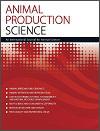In this study, L-carnosine was added to semen diluents so as to overcome the problems encountered during the freezing of ram semen. The cell membrane protecting and diluent pH buffering properties of L-carnosine came to the fore. The freezing quality of semen was found to be enhanced when 5 mM of L-carnosine was added. This result was demonstrated by basic analyses (computer-assisted semen analysis (CASA) and flow-cytometry) of ram semen after freezing and thawing.

Animal Production Science
Volume 64 Number 11 2024
In this review, we have analysed the animal husbandry and animal food production activities of the village institutes, a former educational institution in Türkiye. The ability of these institutions, which operated between 1940 and 1954, to create and sustain their resources in the face of shortages caused by World War II is noteworthy. The activities of these institutions, which are still spoken about both in their period and today, can be seen as an example for today’s food and agricultural authorities.
AN23428 Abstract | AN23428 Full Text | AN23428PDF (2.7 MB) Open Access Article
Most sheep in Australia have their tails docked and it is recommended that, after docking, the tail covers the vulva of ewes, with an equivalent length in males, because docking at a shorter length increases the risk of disease and compromises welfare. An Australia-wide survey of sheep producers was conducted and found that >50% indicated that they docked sheep tails shorter than recommended, and 20–25% were unaware of the recommendation. Short tail docking remains a sheep-welfare concern and requires further research and extension.
AN24142 Abstract | AN24142 Full Text | AN24142PDF (607 KB) Open Access Article
Increased movement of livestock and products in the Greater Mekong Subregion (GMS) has enhanced disease transmission risk, increasing transboundary animal-disease (TAD) incursions and one health (OH) concerns. This has coincided with increasing awareness of greenhouse-gas emissions (GHGe) from livestock, especially contributions to ecosystem health (EH) concerns from large ruminants. Projects addressing biosecurity, vaccines, disease surveillance, feeding systems and national emergency disease-response capacities are required, and private-sector investments developing climate-resilient livestock systems to support the livelihoods of poor rural communities in the GMS should be encouraged.
This article belongs to the Collection Sustainable Animal Agriculture for Developing Countries 2023.
AN23431 Abstract | AN23431 Full Text | AN23431PDF (328 KB) Open Access Article
The assessment of glycemia is crucial for diagnosing pathologies, balancing diets and measuring stress in production animals. Portable glucometer (PGM) has been shown to be an effective, simple, practical and accessible tool for measuring blood glucose in goats, cattle and horses, for example. Here we used PGM to assess glycemia in sheep, and found that it provides satisfactory and reliable results when compared with enzymatic method. The use of PGM promotes early diagnosis, field tests and monitoring of metabolic diseases.




